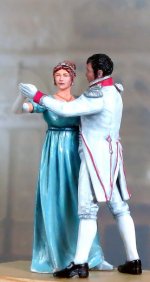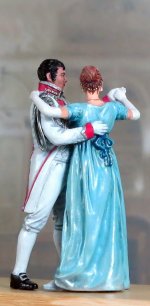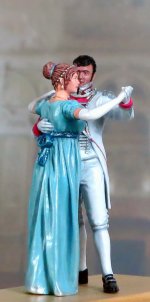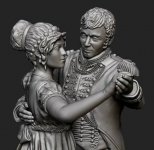Dear ones,
We apologize for the misleading information – this is a
Chevau-léger!
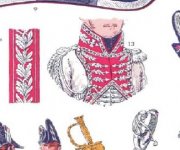
The dancing figure of a man represents a senior officer of the Polish lancers – 1st Regiment, Chevau-léger of the Imperial Old Guard – dressed in parade uniform on the occasion of the ball. Chevau-légers were famous as the best dancers of the Napoleonic period.

:
The French Revolution has changed a lot. What just recently seemed highly immoral was no longer condemned – so did waltz have tremendous success and created quite a furor in Parisian ballrooms. Scandalous or not, the waltz became immensely popular, spreading from Germany to the dance halls of Paris as soldiers returned from the Napoleonic wars.
The Waltz had humble beginnings in rural Germany. In the mid 18th century, peasants began to dance something called the landler in Bohemia, Austria, and Bavaria. At the time, the sophisticated upper class was dancing to the minuet at their balls, but the peasants' dance was so much more fun that noblemen would attend the lower class gatherings just to enjoy it.
So while the ladies and gentlemen of the Baroque and Rococo grew bored with the formal minuet, the people in the countryside, and later in the suburbs, would embrace one another lustily in three-four time. Word soon got around among the blasé aristocrats that the waltz was a very erotic dance. On the largest estates, some noblemen began slipping away to the balls of their servants.
Napoleon's invading solders spread the waltz from Germany to Paris; then the dance glided across the channel to England and finally made its way to the United States.
A little bit about the outlook of a lady:
In those days people began using clothing more as a form of individual expression of the true-self than as a pure indication of social status. As a result, the shifts that occurred in fashion at the turn of the 19th century granted people the opportunity to present new public exterior identities that provided insights into their individual private selves. Women's fashions followed classical ideals, and tightly laced corsets were temporarily abandoned in favor of a high-waisted, natural figure. This natural figure was emphasized by being able to see the body beneath the clothing. Visible breasts were part of this classical look, and some characterized the breasts in fashion as solely aesthetic and sexual. In this period, fashionable women's clothing styles were based on the Empire silhouette — dresses were closely fitted to the torso just under the bust, falling loosely below. Inspired by neoclassical tastes, the short-waisted dresses sported soft, loose skirts and were often made of white, almost transparent muslin, which was easily washed and draped loosely like the garments on Greek and Roman statues. Evening gowns were often extravagantly trimmed and decorated with lace, ribbons, and netting. They were cut low and sported short sleeves, baring bosoms. Bared arms were covered by long white gloves. It was also advised for young ladies to wear softer shades of color, such as pinks, periwinkle blue, or lilacs. The mature matron could wear fuller colors, such as purple, black, crimson, deep blue, or yellow.
During the first two decades of the 19th century, fashions continued to follow the basic high-waisted empire silhouette, but in other respects neoclassical influences became progressively diluted. Dresses remained narrow in front, but fullness at the raised back waist allowed room to walk. Colors other than white came into style.
Thank you for showing your lively interest in our work!
ArtIG
